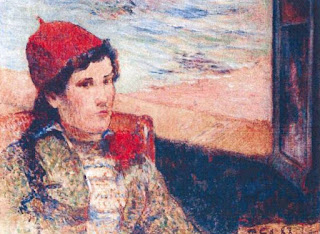Wednesday, November 21, 2012 -  Fall 2012,forged letters,John Daab,Lord Byron,QDE process,Questioned Document Examination,the Journal of Art Crime
Fall 2012,forged letters,John Daab,Lord Byron,QDE process,Questioned Document Examination,the Journal of Art Crime
 No comments
No comments
 Fall 2012,forged letters,John Daab,Lord Byron,QDE process,Questioned Document Examination,the Journal of Art Crime
Fall 2012,forged letters,John Daab,Lord Byron,QDE process,Questioned Document Examination,the Journal of Art Crime
 No comments
No comments
The Journal of Art Crime, Fall 2012: "The Lord Byron Forged Letter: Where's the Questioned Document Analysis (QDE)?" by John Daab
In the Fall 2012 issue of The Journal of Art Crime, regular contributor John Daab writes on "The Lord Byron Forged Letter: Where's the Questioned Document Analysis (QDE)?":
Lloyd Smith was an avid collector of rare books and letters amassing thousands of works upon his death. In 1957 the Morristown National Historical Park Museum was elated to find that they were the recipient of 300,000 of Smith's works from his estate. Contained with these artifacts was a letter from Lord Byron, the poet. Over the last 40-50 years the letter was exhibited on occasion but, for the most part, it lay in storage (Pfister, 2011). In 2010 the letter was scanned and brought to the attention of nearby Drew University scholars, who suspected that the work was not genuine (Appendix exhibit B). The evidence supporting the forgery call was that there were anomalies in signature, date, type of address to Captain hay (the receiver of the letter), and wording used. The scholars argued that the signature was not that of Lord Byron, the dating of the months did not match Byron's dating, the word "affectionately" was not typical for Byron, and the use of "My dear Hay" to address Captain Hay his friend was not appropriate (Fischer, 2012 Appendix C).
To confirm the conclusion found by Drew Scholars, the National Historic Park Museum enlisted the services of Doucet Devin Fisher from the New York Public Library, a Byron scholar and member of the Byron Society. Fisher compared the letter with the notes of a Rutgers University Byron scholar Leslie Marquand, and found that the letter was a forgery. Fisher noted that the Byron letter under review matched a similar forgery. What is not apparent from the various narratives and media accounts found regarding the announcement of the forgery, is a clear description of how the forgery was determined. The fundamental rule in scholarly research and forensic examination is that another researcher may carry out the research in similar fashion and reach the same conclusion. Verification informs reliability and, without it, specious conclusions may emerge. What seems to be problematic and a serious issue is that those carrying out the process of document determination, in terms of authenticity, is the extent that the process establishing the forgery followed proper QDE, or Questioned Document Examination (FBI, 2009). Before we engage in the QDE process ourselves, let us first define and discuss some of the concepts presented in the account of the latest Byron fake and those lacking in the examination.
John Daab was formerly a NYCTP Police Officer and an NYU Professor. John holds the following designations: Certified Fraud Examiner, Certified Forensic Consultant, Certified Criminal Investigator, Certified Instructor, Diplomate American Board of Forensic Examiners, Certified Homeland Security, and Certified Intelligence Analyst. He holds the degrees of Ph.D. MA, MPS, MA, MBA, and BA. He writes regularly for The Journal of Art Crime.









